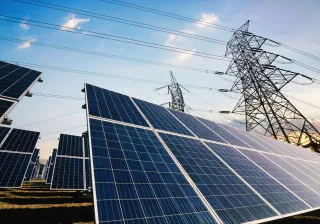Digitalisation, intelligent metering, bidirectional district heating and renewable energy integration are buzzwords among district heating operators. But is the integration of new technology with traditional district heating systems difficult. Is- such technology expensive? Now is the time for deeds, and the technology already exists!
When discussing the future of district heat with district heating companies, cities, companies in the sector and residents’ representatives at an event arranged by VTT, we noted the lack of clarity on what new technology should be integrated with the district heating network and how. However, everyone is unanimous about one clear issue: coal burning is coming to an end and district heating production methods are changing – the faster, the better.
In Finland, more extensive use of bioenergy has been a natural substitute for coal and oil in renewable heat production. However, there are other uses for biofuels as well. The district heating network, which has been characterised as inflexible and traditional, is, anyhow, quite flexible.. One of its clear advantages lies in the possibility to use variable heat sources. In the future, this will mean the more extensive integration of waste incineration, waste heat recovery and solar thermal and heat pumps with the grid, both directly and indirectly via customers, as a supplement for bioenergy production. We talk about a hybrid system, in which different production methods are complementary; for example, bioenergy and heat pumps enable the utilisation of seasonally varying solar heat.
While the price of renewable heat has fallen rapidly during the current decade, it remains expensive compared to traditional solutions. The widespread use of solar heat faces the challenge of seasonal variation. The inventor of a cost-effective, seasonal heat storage technology will be sitting on a gold mine!
Balancing production and consumption in a complex system
It is predicted that district heating will soon include small producers, block-specific production and regional systems. Happily, such development projects are already underway, for example the LEMENE project in Lempäälä, the Skanssi area in Turku and the Wasa Station in Vaasa. The need for cooling is also increasing – one person’s heat can be another’s cooling. We need comprehensive, system-level thinking in order to benefit more from circular economy energy solutions. Integrating consumer-producers with the district heating system involves a technical challenge, which must be fully solved for system to function energy efficiently. The integration must be done in accordance with general standards, and by taking account of the views of experts.
It’s not about which technology wins, but how different technologies fit together
The design, measurement and management of overall systems will play a key role as heat production technology diversifies. Who will be responsible for balancing production and consumption in a complex system? In today’s system, district heating companies must guarantee district heating to customers around the clock in all conditions. A complex system will also require data collection and utilisation – the more extensive digitalisation of the heat production system. However, digitalisation is not without challenges. The problem can even be physical. For example, in the case of a district heating network, how can intelligent features be added to a system that is hidden underground? We also need to clarify how data can be processed and used optimally. Who should be allowed to use data gathered from the district heating system and customers?
The district heating network is old in many urban areas. Changing the existing underground system could be a laborious and costly process. While the district heating system offers huge potential for collecting and distributing heat from a range of decentralised sources, this will involve technical challenges. For example, the temperature of solar and waste heat is typically lower than that of the heat currently supplied by district heating networks, which will impose major demands on heat pumps.
So there are many possibilities, but also much to develop. Analysing the functionality of the overall system will enable the improvement of energy efficiency throughout the energy chain, from production to consumption via distribution. On the other hand, this will enable the development of various products and services that best serve the overall system. All players will have a place in this joint development.
For more information:
Bioenergy RES hybrids in Finland (pdf)
Local energy in a residential area. An example is Vartiosaari in Helsinki ( pdf., in Finnish)
Visions for future energy efficient district energy systems (pdf)





